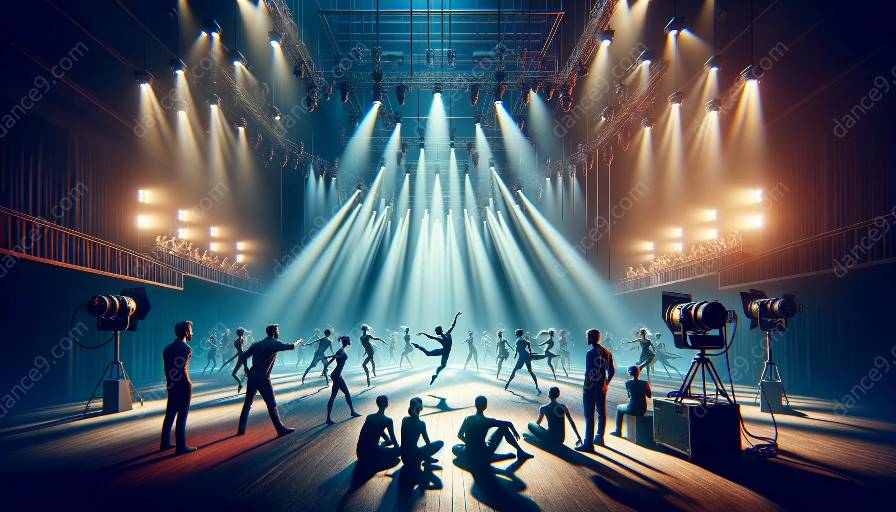Modern choreography has greatly benefited from the integration of innovative lighting techniques that not only illuminate the stage, but also enhance the overall visual experience for audiences. In this article, we will explore the creative ways in which lighting is used in modern choreography to complement and elevate dance performances.
1. Color and Intensity Manipulation
One of the fundamental techniques used in modern choreography is color and intensity manipulation. By using a combination of colored lights and varying intensities, choreographers and lighting designers can convey different moods and emotions throughout a performance. For example, warm, soft lighting may evoke a sense of intimacy and tenderness, while bright, bold lighting can create a high-energy and dynamic atmosphere.
2. Dynamic Movement and Pattern Lighting
Another innovative technique involves dynamic movement and pattern lighting. Choreographers often collaborate with lighting designers to synchronize the lighting with the movements of the dancers, creating mesmerizing visual effects. This may include using moving lights, gobo patterns, and projections to add depth and dimension to the performance space, enhancing the dancers' movements and creating stunning visual compositions.
3. Interactive and Responsive Lighting
Advancements in technology have paved the way for interactive and responsive lighting techniques in modern choreography. This involves using sensors, motion tracking, and other interactive tools to allow the lighting to respond in real-time to the dancers' movements. The result is a seamless integration of light and movement, blurring the lines between choreography and lighting design, and creating immersive and interactive experiences for the audience.
4. Spatial and Environmental Lighting
Modern choreography also explores spatial and environmental lighting to transform the performance space. This may involve utilizing techniques such as architectural lighting, laser lights, and LED installations to manipulate the physical environment and create a sense of depth and dimension. By incorporating lighting as an integral part of the performance space, choreographers can shape and redefine the audience's perception of the stage.
5. Collaborative Approach
It's important to note that the integration of innovative lighting techniques in modern choreography requires a collaborative approach between choreographers, dancers, and lighting designers. Through close collaboration and experimentation, choreographers can leverage lighting as a powerful tool to augment the storytelling and emotional impact of their work, resulting in visually captivating and emotionally resonant performances.
Conclusion
In conclusion, the creative use of innovative lighting techniques in modern choreography has revolutionized the way dance performances are presented and experienced. By harnessing the potential of lighting as a dynamic and expressive medium, choreographers are able to elevate their art form and immerse audiences in captivating visual narratives. As technology continues to evolve, the possibilities for integrating lighting into choreography are endless, opening new frontiers for artistic expression and sensory engagement.






































